#20. Wildlife Creatures
Wildlife is a term that refers to those undomesticated species that live in the wild, generally with little or no contact with human beings. Wildlife creatures can be found in practically any environment, from deserts to woodlands, and from fields to prairies.
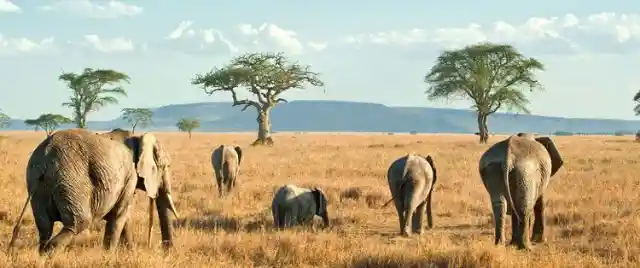
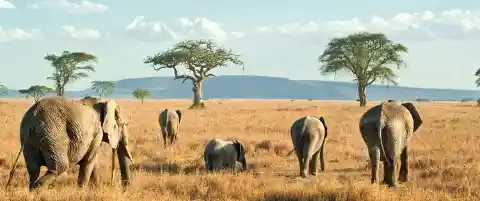
Most wildlife creatures should not be domesticated by humans or kept as pets. To begin with, because it’s extremely dangerous to keep certain animals as pets, as the case of most mammals and reptiles. But apart from that, many animals require a vast amount of space in order to survive. For instance, if a lion or an elephant is purchased as a pet and kept inside a cage or a small garden, they may suffer from psychological breakdowns.
#19. Wildlife Species As Pets
In this past decade, thanks to the globalization of technology, more and more people from all over the world are connected thanks to social media. And as a result of this growing connectivity, a common trend is for wealthy people to purchase expensive exotic animals to upload images of them on social media.

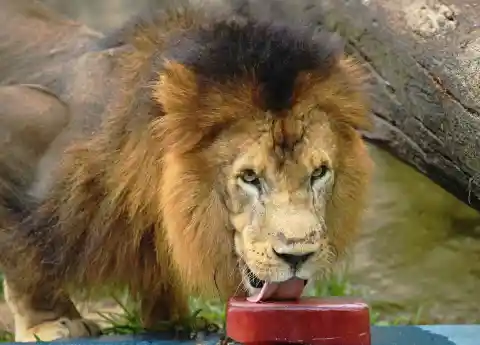
Some people do this in order to gain fame and popularity. In fact, some people even become social media influencers thanks to their exotic pets. What is more, if their photos or videos receive a great number of views, they may even win lots of money from publicity.
#18. Animal Rights Advocates
However, many people who own exotic animals often mistreat them once the camera is off. What’s even worse is that some people upload videos on social media explicitly showing how they mistreat them or showing the poor conditions in which they keep them.
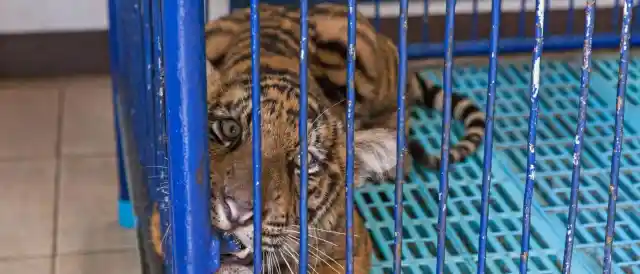
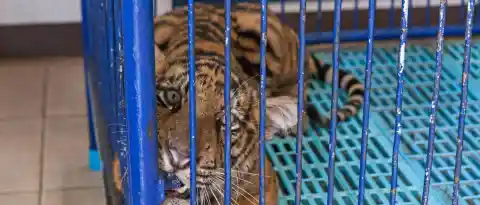
When this happens, animal advocates or caregivers take matters into their own hands. They take immediate action and sometimes they contact law enforcement to find the person in the video and rescue the animal. This is exactly what happened in the following story.
#17. Animal Advocates Take Action
In 2018, a French group of animal advocates known as Born Free found out that a man had uploaded several videos of his pet lion on social media. Sadly, some of the footage included explicit scenes of mistreatment. Thus, they immediately contacted the local authorities.

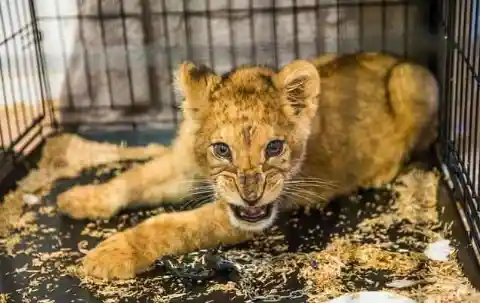
The authorities managed to trace the man’s address within a week. It turns out he lived in an apartment in Noisy-le-Sac, a commune located in the eastern suburbs of Paris. After tracking down the house, a group of firefighters was sent to the location. Can you guess what they found?
#16. Nobody There
When the firefighters entered the apartment, they realized nobody was there. First, they wanted to make sure whether or not the apartment really belonged to the man in the videos, so they began looking for any clues that would give away the answer.
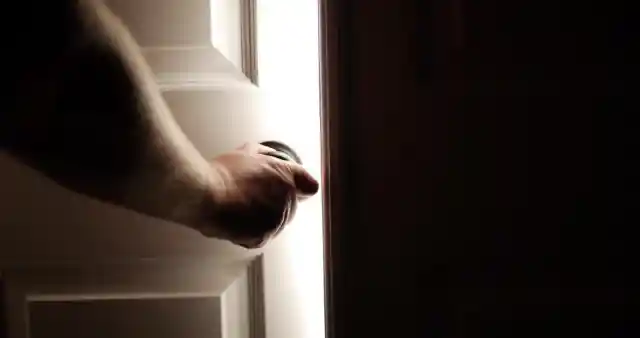
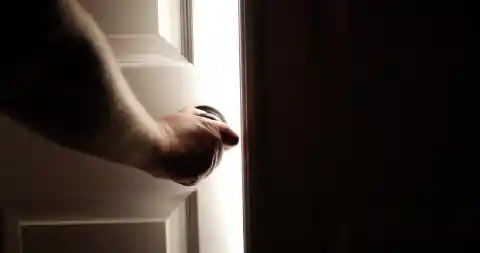
They searched through the kitchen, the living room, and one of the rooms, but there was no-one to be found nor any hints of wild animals. But there was still one room which they hadn’t searched, and it happened to be the only one which had its door closed. What do you think they found inside?
#15. The Caged Lion
When they were heading towards the door, they heard a crackling sound coming from the inside. They knocked, but as they expected, nobody answered. When they opened the door and went inside, they found what everyone suspected.
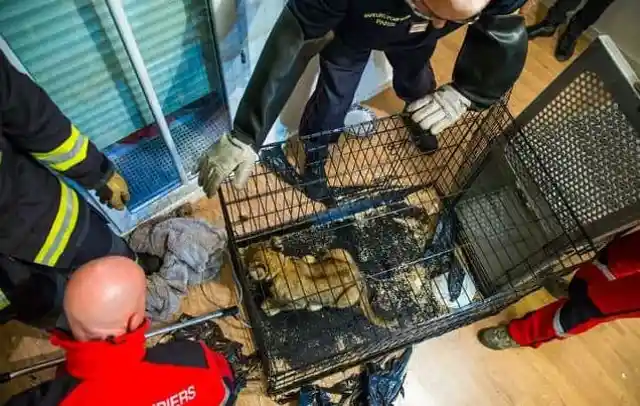

In the corner of the room was a small cage, and inside the cage was the lion cub, the same one that had appeared in the videos. The man had left the lion curved and in pain. What do you think they did next?
#14. Just A Cub
As the team of firefighters inspected the lion, they realized that he was just a cub, maybe even less than a year old. The cub’s skin was in a deplorable state, which indicated that he had not been receiving the proper health care and attention.
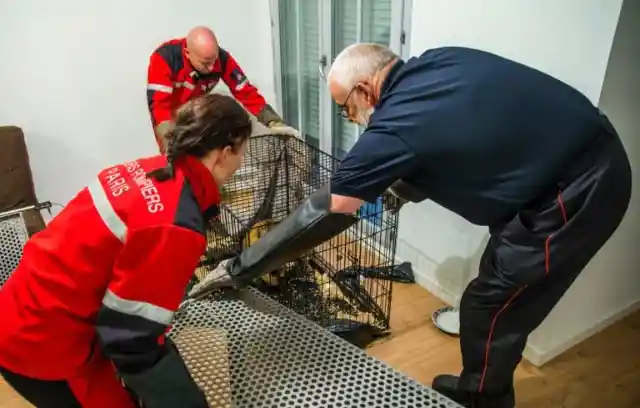

But not only that; the lion’s skin was also covered with bruises and wounds. So apart from the unsanitary conditions in which he lived, he had also suffered physical abuse from his owner. Clearly, serious actions had to be taken and fast.
#13. Behind Bars
With the help of the local police, the man was found a couple of days later. He was thoroughly interrogated, and he confessed that he had bought the lion club illegally to earn money by distributing pictures and videos of him.
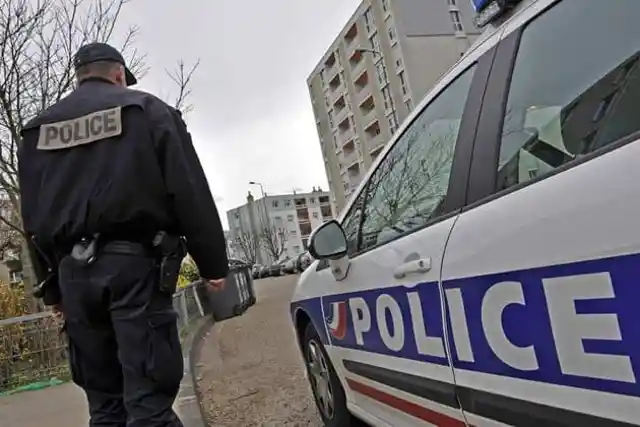

The man was arrested and is now behind bars. After all, several national and international laws penalize illegal animal trade. But what happened to the lion after he was rescued? Keep on reading to find out.
#12. Refuge De L’Arche
The lion was first taken to Refuge de l’Arche, a French NGO that rescues and looks after abandoned and orphaned animals, especially those victims of illegal trade or who have been kept illegally in captivity.

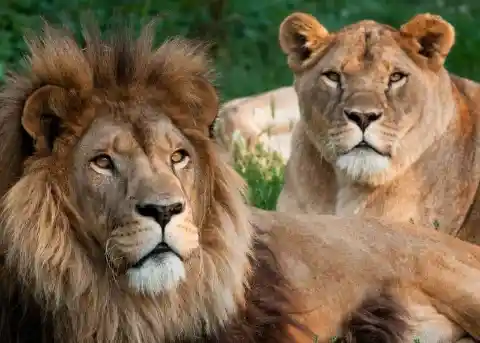
The Refuge de l’Arche is based in the district of Château-Gontier, in the region of Pays de la Loire region. There, they own a vast piece of land which houses over 1,500 animals from 150 different species. Once the animals recover, they are taken back to their natural habitat. But what about the lion? What was his fate?
#11. Natuurhulpcentrum Rescue Center
After spending a few months in this animal refuge, the lion was sent to a temporary home at the Natuurhulpcentrum Rescue Center, in Opglabbeek, Belgium. Similar to Refuge de l’Arche, Natuurhulpcentrum is a center that works for the rescue and rehabilitation of injured and sick wild animals.
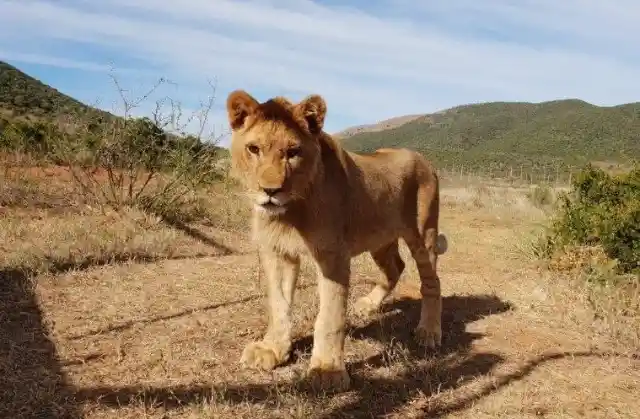
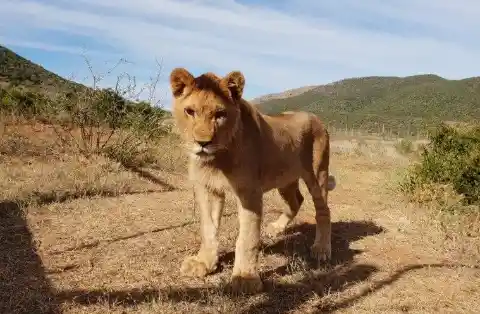
The rescue center’s workers decided to name the lion King. He slowly began to recover, and four months after his rescue he began to eat meat. Two months later, he was already fully recovered. But there was a problem: King couldn’t stay in this center forever.
#10. In Need Of A New Home
Problems began when King attempted to escape from the Rescue Center’s facilities. The second time this happened, the center’s staff realized that something had to be done. King needed a new home.
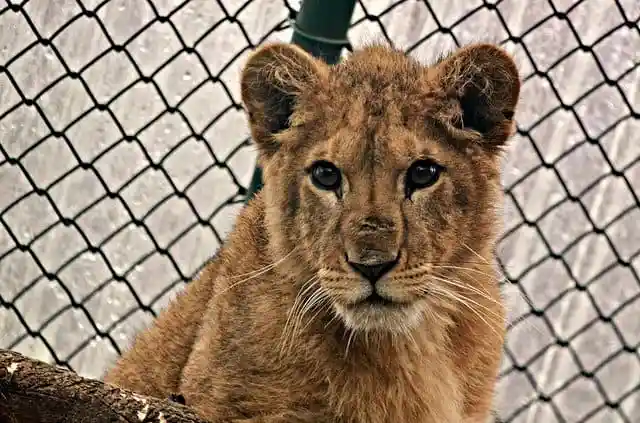
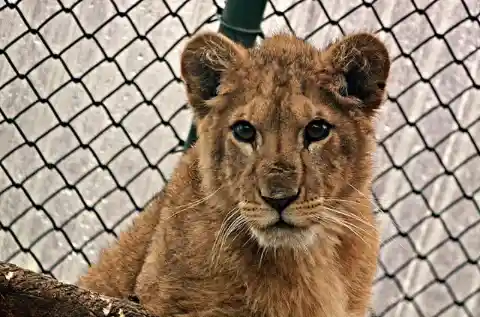
On top of that, the Belgian rescue center had limited capacity. There were lots of sick and wounded animals in much worse conditions than King. Luckily, the volunteers of the French animal rights organization Born Free helped King find a new home.
#9. Welcome, Africa!
In the end, King was sent to the Big Cat Rescue Center at Shamwari Private Game Reserve, located 75 kilometers from Port Elizabeth, South Africa. Luck was on his side, as Shamwari is one of the country’s leading Safari and Game Reserves.
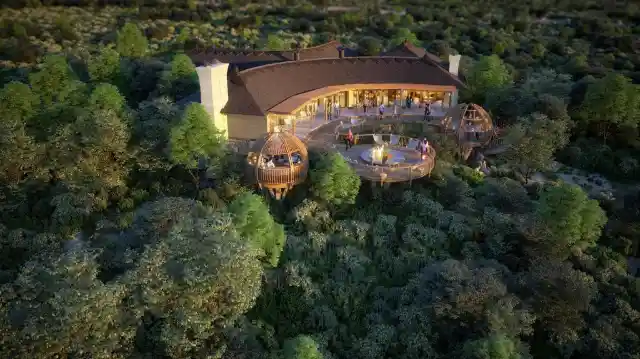
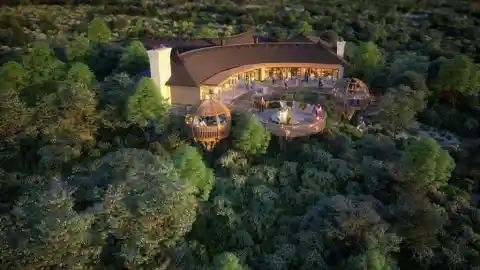
Not only does Shamwari feature deluxe safari and accommodation facilities, but it also houses a conservation center which aids rescued animals. Once they are fully recovered, they are released in the Reserve so that they can live in the wild again.
#8. Plane Trip
But there was one problem that had to be solved: who would fund the flight from Belgium to South Africa? Well, fortunately, the staff at Born Free – the same who first reported King’s abuse to the Parisian police – raised funds to pay for King’s flight. Can you even imagine a lion on a plane?
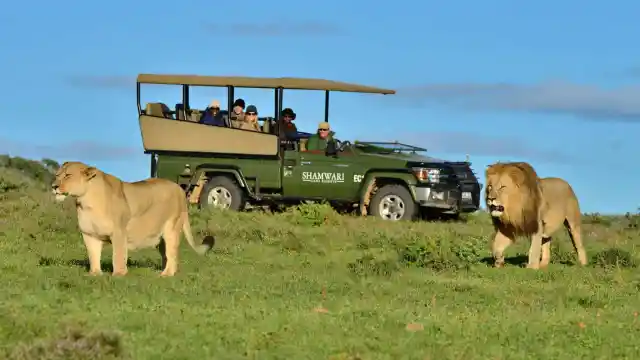
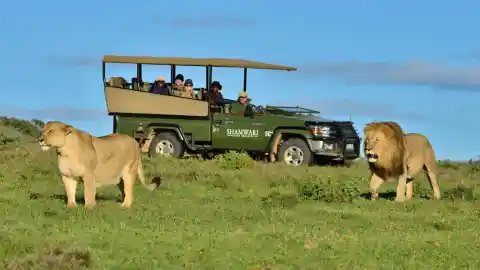
King first flew from Belgium to London’s Heathrow Airport, and then, from London to Johannesburg. Once in South Africa, he took a third and last plane from Jo-burg to Port Elizabeth. It’s crazy to even think about all that this cub went through before landing on his permanent home!
#7. Home Sweet Home
After an endless journey and after traveling for over 6,000 miles, King arrived at the Shamwari Reserve. He was taken from the airport to the reserve on a private vehicle, and the authorities said that King was anxious to get out of the jeep once they arrived.


The staff at Born Free and the staff at the Shamwari Reserve were both very anxious, as this was the first time in which King would be released in the wild. How would he react? Would he adapt quickly to the new environment? Slide next to find out!
#6. Into The Wild
This was the first time that King could roam through the grasslands in the wild. She jumped through the grass and investigated the environment, just like a dog would do the first time it enters a new home. Finally, King was able to enjoy the freedom that he deserved.
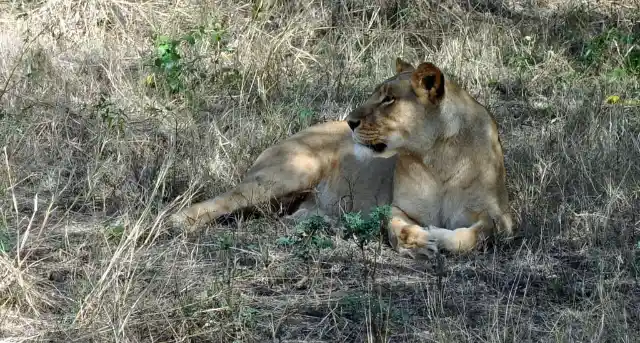
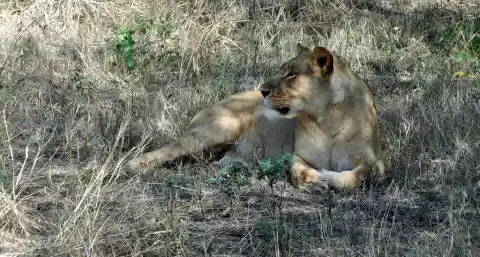
And on his very first day in the reserve, he met Jora and Black, two lions who had been rescued from a circus, very much like him. The pair of lions greeted King with an intimidating roar. It may sound like a violent reaction, but it’s actually a sign of acceptance and welcoming.
#5. Part Of The Family
The staff of the Shamwari Reserve observed King closely during his first few days. They were all surprised how well King was adapting to his new environment. He spent most of the time in the company of Jora and Black, and they played a lot together.

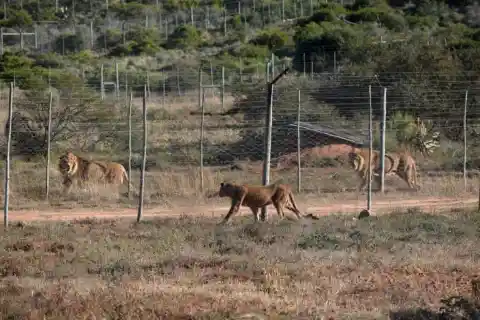
In fact, the three even shared meals together! The Head of the Animal Welfare and Captivity at Born Free, Dr. Chris Draper, stated that King’s behaviors were similar to those of other animals who are rescued from captivity and released to the wild.
#4. Wild Animals Aren’t Pets
Draper is one of Born Free’s most trained staff members, and he constantly tries to raise awareness on the dangers of keeping wild animals as pets. The thing is that domestication is a process that occurs throughout many generations, so you can’t just keep a wild species like a lion inside your house and expect it to behave properly.
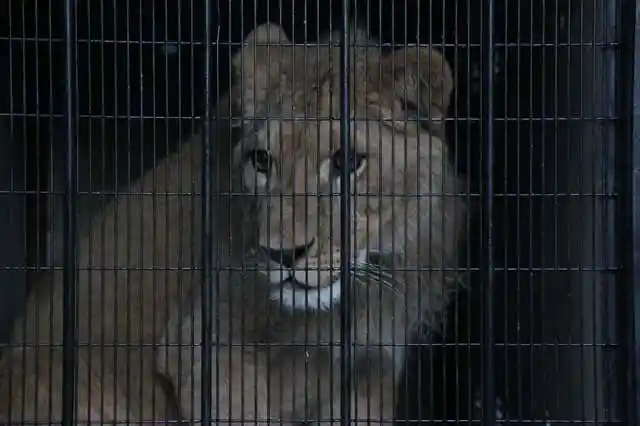

As Draper explained in an interview:
“Whether wild-caught or captive-bred, wild animals retain their wild instincts and their often complex social, behavior and environmental needs. These are the needs that are impossible to meet in a domestic environment“.
#3. Wild Animals Will Always Be Wild
Surprisingly enough, possessing or purchasing wild exotic animals such as big felines or primates is not illegal in many countries. However, no matter what the law says, it’s important to remember that keeping a wild animal inside your house won’t make it a pet. On the contrary, it will continue to be a wild animal and to behave like one.
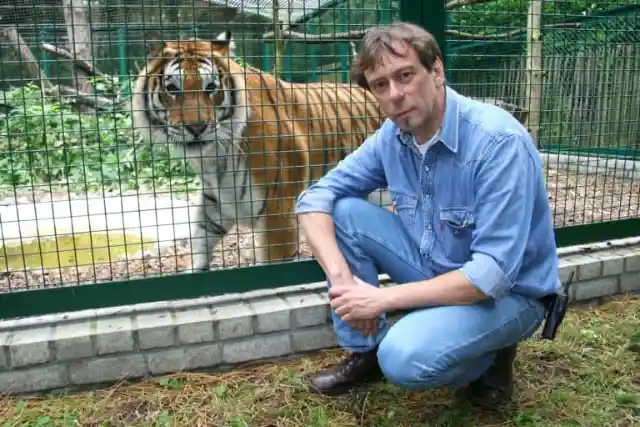
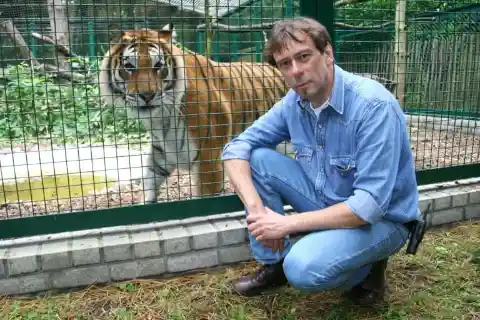
According to Draper, a lot has to be done in order to raise awareness on this issue. In Great Britain alone, more than 292 wild felines are kept as pets, which poses a potential threat to hundreds of human lives. Just think how many there must be in the whole world!
#2. Illegal Trade
According to most animal rights NGOs, there should be strict laws against the purchase and domestication of illegal animals, as this fosters and facilitates illegal trade and poaching. As Draper claims: “The endless demand for exotic and dangerous kinds of wild animals in the pet trade needs to stop“.
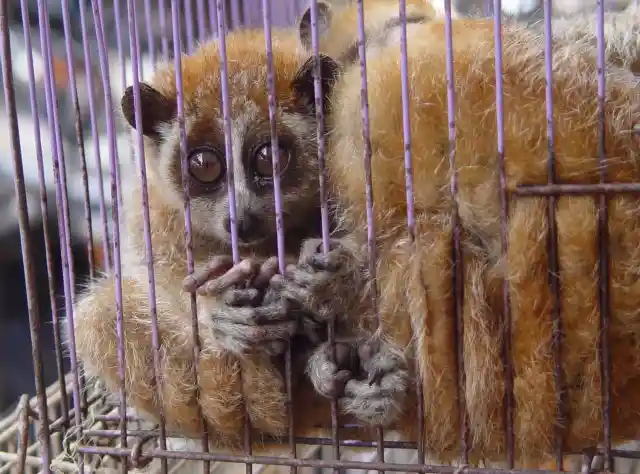
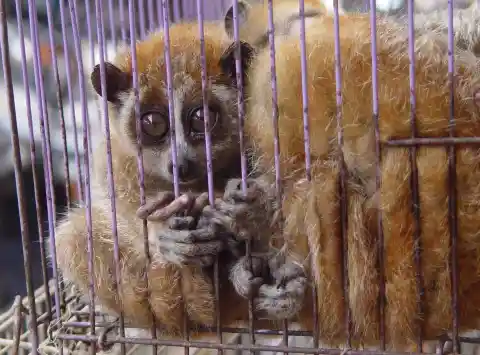
If you still thought that poaching and animal traffic wasn’t a big deal, you should know that millions of animals are sold illegally each year, many of which are kept in people’s backyards, rooms, or even basements, many of which remain caged.
#1. Raising Awareness
According to Born Free, South Africa is the world’s largest exporter of lion bones and skeletons, which means that lion poaching is a major issue. There are reportedly between 6,000 and 8,000 lions held in captivity, while only 2,876 live in the wild.

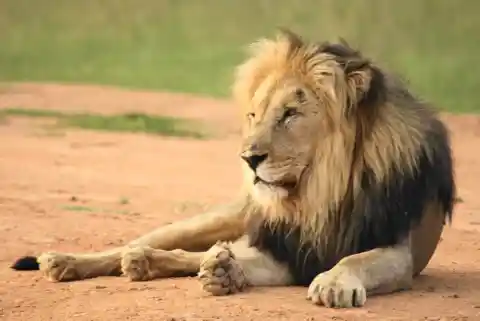
Born Free, as well as all the other animal rights organizations, hope that King’s story will raise awareness on the illegal exotic pet industry. As Draper wisely claimed:
“This situation needs to be addressed urgently, and we hope that by introducing the world to King – his plight, his rescue and his re-homing to lifetime care – Born Free can draw attention to this important issue“.
Let’s just hope that things begin to change for good!